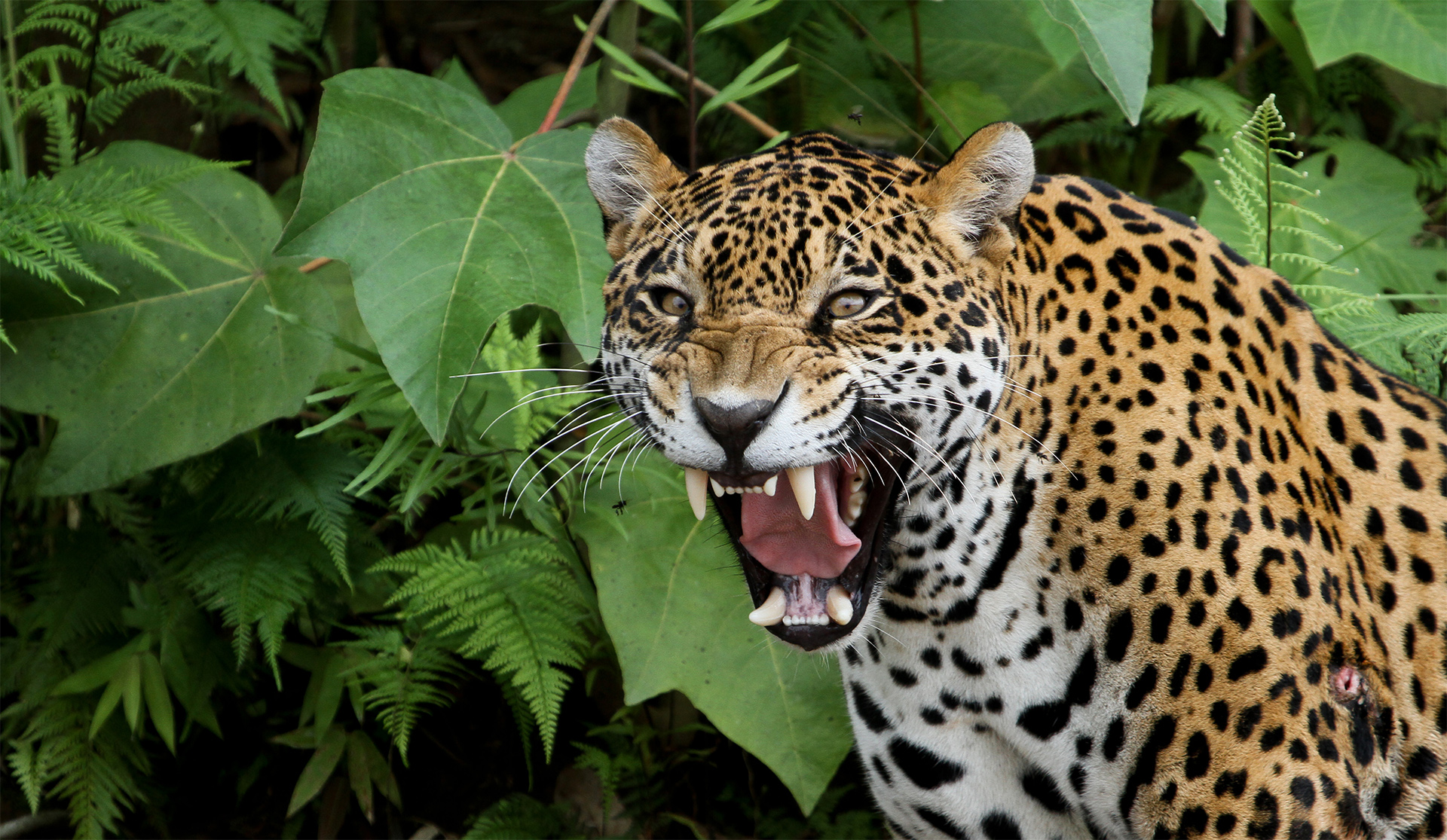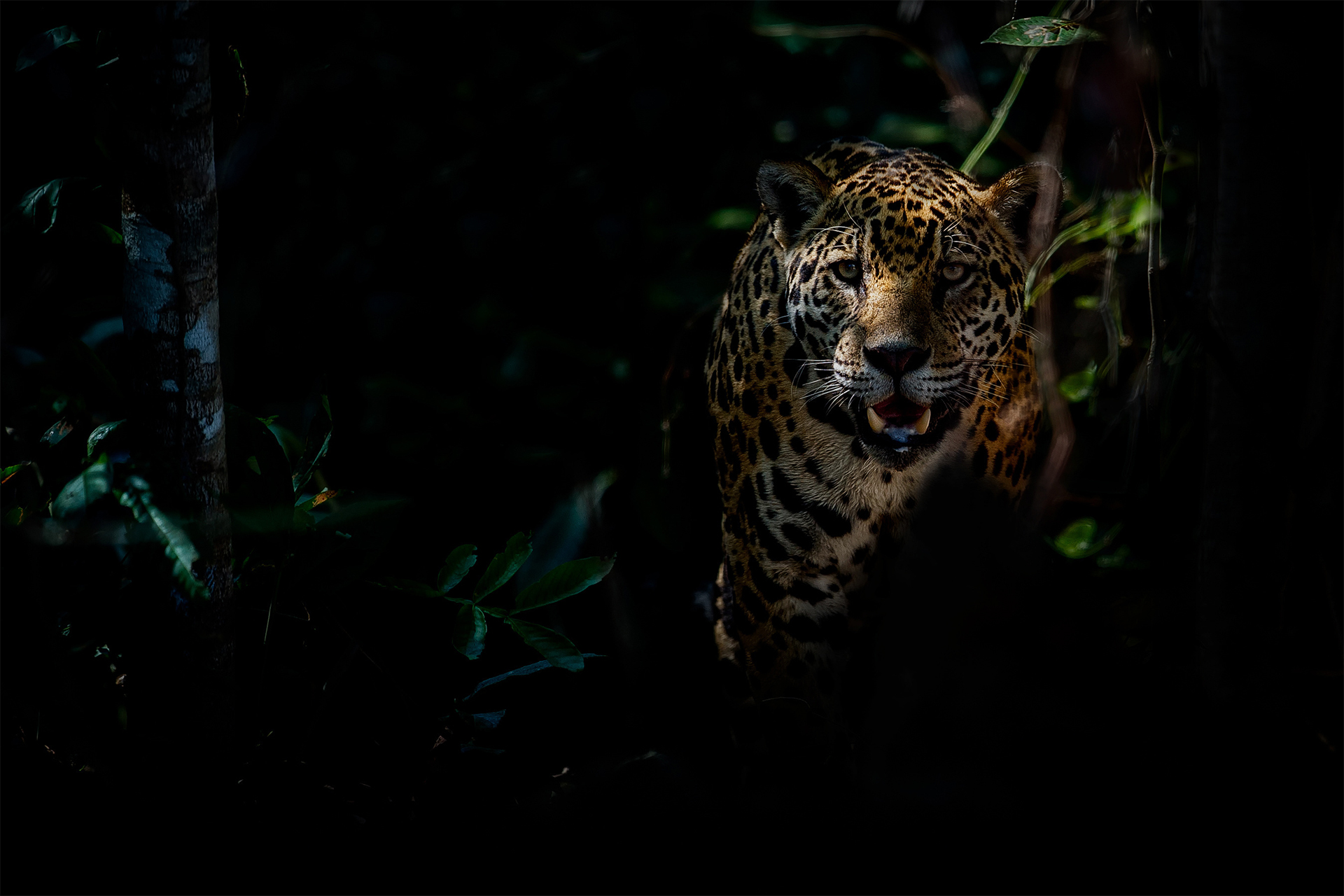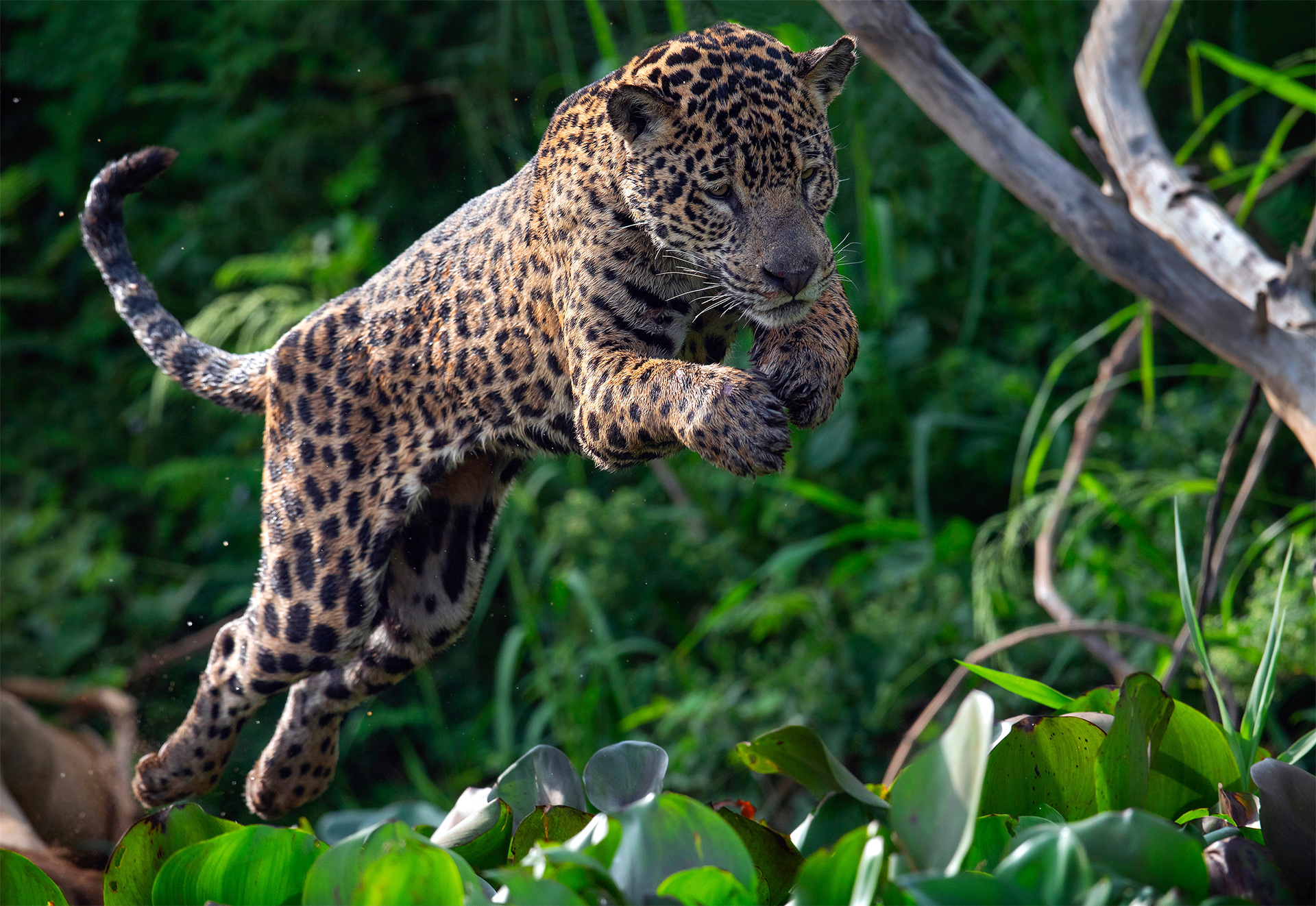More than 1,200 rivers converge to feed the Pantanal, the world’s largest tropical wetland. That’s 42 million acres of aquatic habitat spread across three countries: Bolivia, Brazil and Paraguay. More than 4,700 plant and animal species reside here, including the world’s largest parrot—the blue-and-yellow hyacinth macaw—the brilliant blue morpho butterfly, the Victoria giant waterlily, and the largest canine in South America—the maned wolf.
It’s also in the Pantanal that you’ll find the biggest of big cats in Central and South America: the jaguar (Panthera onca).
Jaguars of the Pantanal
Jaguars are classified globally as Near Threatened, with populations severely fragmented. Total numbers are estimated at 173,000, with Brazil home to around 86,000 individuals. The planet’s largest concentration of jaguars exists in the Pantanal, where there are thought to be about 4,000.
As the third-largest cat in the world (after lions and tigers), you’d think spotting a jaguar would be a breeze. But here in the Pantanal, even the largest and most ferocious of predators is dwarfed beneath towering palms and roaring waters.

© Frederico Tavares
Jaguars are solitary mammals that prefer to be alone, making spotting one all the more difficult. The only exceptions to this behavior are during mating and, afterward, during the birthing and rearing of offspring, during which the mother fiercely protects one to four cubs for two years or more. Sometimes, a mother jaguar must even defend her litter from the father!
My best advice for capturing more than a glimpse? Learn their behavior! Here are 5 tips to help you spot jaguars in the wild, including on our Jaguars & Wildlife of Brazil’s Pantanal adventure.
1. Look and Listen Closely in Big Cat Territory
Jaguars define their territory by clawing trees and leaving droppings along the forest floor. If you see these signs, keep your eyes peeled! Males often mark an area of about 65 square miles. Jaguars also communicate vocally, so listen closely. Males bark and growl, while females exert a coughing roar.

> Read: What’s the Difference Between Jaguars, Leopards and Black Panthers?
2. Spot the Camouflage
Jaguars use camouflage—also called cryptic coloration—to mask their location, identity and movement. Most jaguars have tawny-colored fur, but some have black-on-black (or melanistic) coloration. In dense rain forest environments, jaguars are likelier to be all black, allowing them to melt into the shadows.

Most jaguars have coats mottled by numerous jagged black circles called rosettes. Leopards have a similar appearance; however, their markings lack the dotted center that jaguars possess. Rosettes are designed to break up the cats’ outlines among the grasslands and savannas and to obscure the scattering of light and shadows so that they remain hidden from their prey.
3. Stay Alert for Motion as They Stalk Their Prey
The South American Indigenous word for jaguar, yaguara, means “animal that kills in a single bound.” That’s a great clue for when you’re on the prowl for jaguars: Keep an eye out for sudden motion!

Jaguars prey on more than 85 species, including monkeys, birds, peccaries, agoutis, deer, tapirs, capybaras and cattle. Their appetite for underwater fare is most remarkable. Using up to 1,500 pounds of force, jaguars can pierce through bones, skulls and hard-shelled reptiles like turtles and tortoises.
Even caimans (order: Crocodilia) are on the menu. Jaguars often lounge and hunt terrestrial animals from the branches of trees, but they are equally adept fishers. These ingenious cats use their tails to lure prey to the water’s surface and then scoop them up with their massive paws.

© Jeffrey Whittingham
Nighttime ambushes are most successful for jaguars, as their vision is better suited for darker conditions. They have a mirror-like structure called the tapetum lucidum in the back of their eye, which reflects light back into their retina. This is the same “eyeshine” you might observe when shining a light toward your cat or dog. This biological advantage nearly doubles the jaguar’s vision and allows them to pounce with precision on unsuspecting prey.
Check out this video of a jaguar attacking a caiman, captured by a Nat Hab staffer during a recent Jaguars & Wildlife of Brazil’s Pantanal trip:
© Camie Kirkevold
4. Visit During the Dry Season
In the Pantanal, the rainy season runs from December to March, with more than 70% of the total annual rainfall occurring at this time. The dry season—July to September—and the intermediary seasons—April to June and October to November—are the best times to visit this area, as temperatures are cooler and wildlife is more active. Additionally, prey species congregate at the remaining water sources, drawing jaguars into concentrated areas and increasing the likelihood of witnessing some action.

© Frederico Tavares
5. Track Jaguars With Expert Guides
Alongside our travel partner, World Wildlife Fund, Nat Hab offers the most in-depth foray into South America’s grandest wildlife realm. Our 11-day Pantanal itinerary (capped at just 11 guests) ensures exclusive access to jaguar habitat, with multiple opportunities to see these magnificent cats in the wild.

© Cassiano (Zapa) Zaparoli
Nat Hab’s Expedition Leaders average 10 years of experience, with additional training and resources from WWF scientists. We’re also joined by local guides at each lodge who are resident experts in their region’s flora and fauna.
Fellow traveler Sheri Dollin reflects on her Jaguars & Wildlife of Brazil’s Pantanal adventure with the following words:
“Brazil has always been one of those places I wanted to visit, but I questioned what there was to see in terms of wildlife. When I was on a Galapagos expedition with Nat Hab, our photography guide was Zapa. He is from Brazil and enthusiastically told us that Brazil is a wonderful place for wildlife, so I booked a trip with him as the Expedition Leader. It was totally worth it!
The most memorable moment was experiencing the elusive jaguar. I was overjoyed to be able to witness their daily lives without impacting them with our presence. We saw eight different jaguars in the three days we were on the river. This experience gave me hope that, if we work at it, humans can live and thrive with nature and wildlife without destroying it.”
Meet Expedition Leader Zapa in our short film, Zapa & the Jaguar:

























